NVIDIA GeForce RTX 5090 Founders Edition Performance Analyzed
The Nvidia GeForce RTX 5090: A Leap Forward, But For Whom?
Nvidia's latest flagship, the RTX 5090, promises a generational leap in PC gaming. However, the performance gains aren't uniformly impressive across the board. While raw power is significantly boosted, the true next-gen experience hinges heavily on DLSS 4 and its Multi-Frame Generation (MFG) capabilities.
The upgrade's value depends significantly on your gaming setup and preferences. For those with sub-4K displays or refresh rates below 240Hz, the upgrade may not justify the substantial cost. However, high-end display owners will experience a noticeable performance boost thanks to MFG's AI-generated frames.
Nvidia GeForce RTX 5090 – Image Gallery
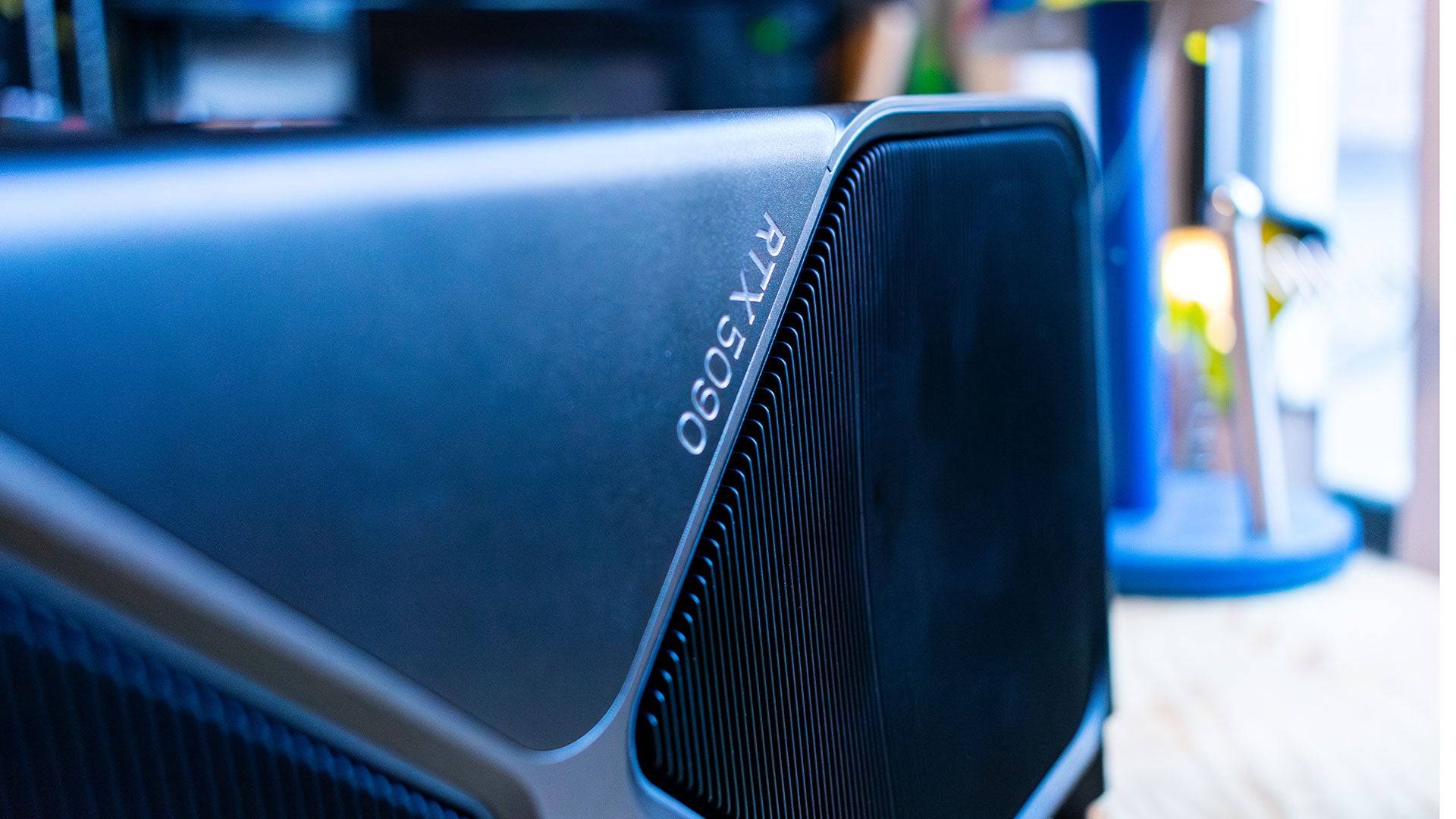
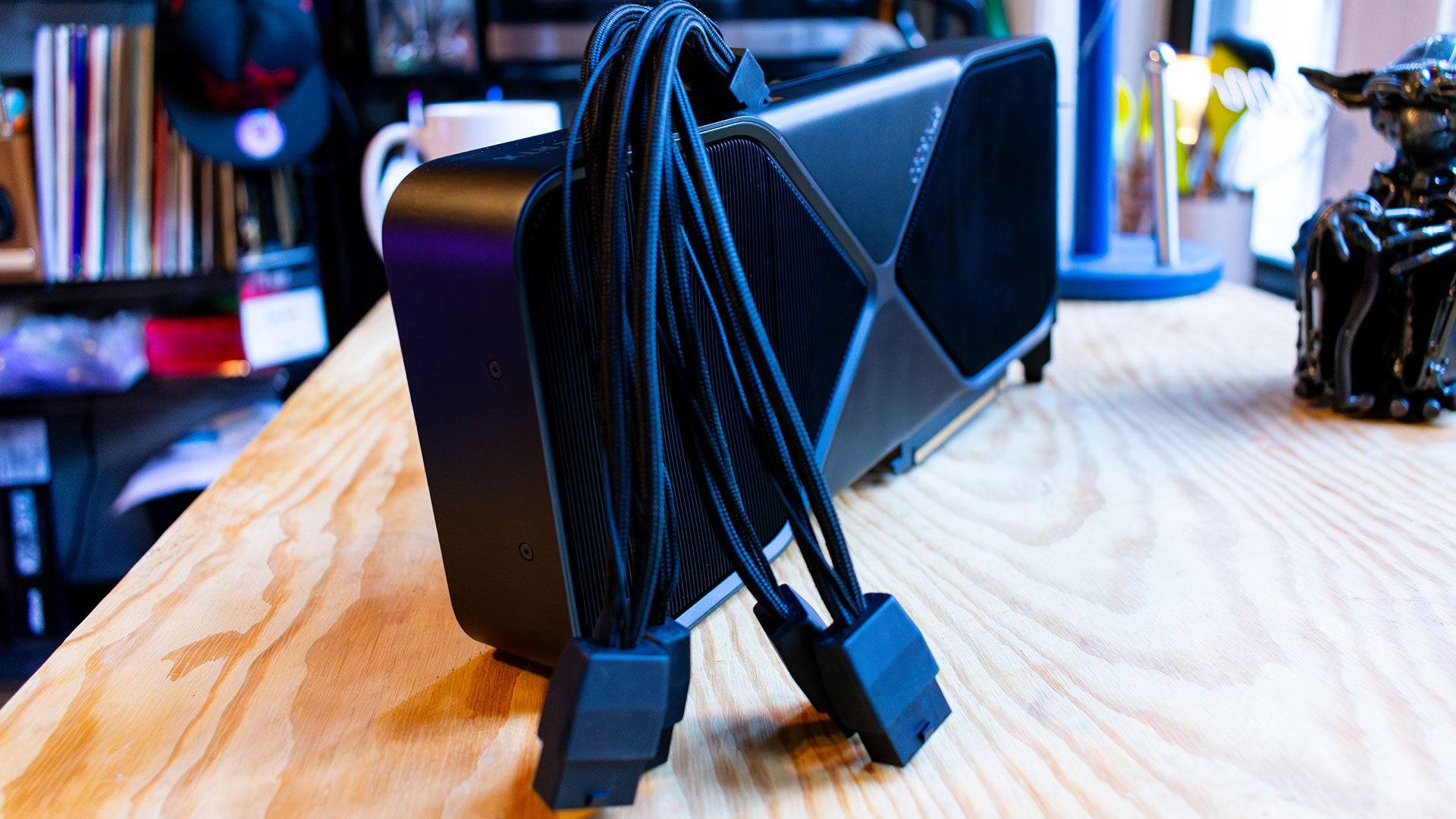 5 Images
5 Images
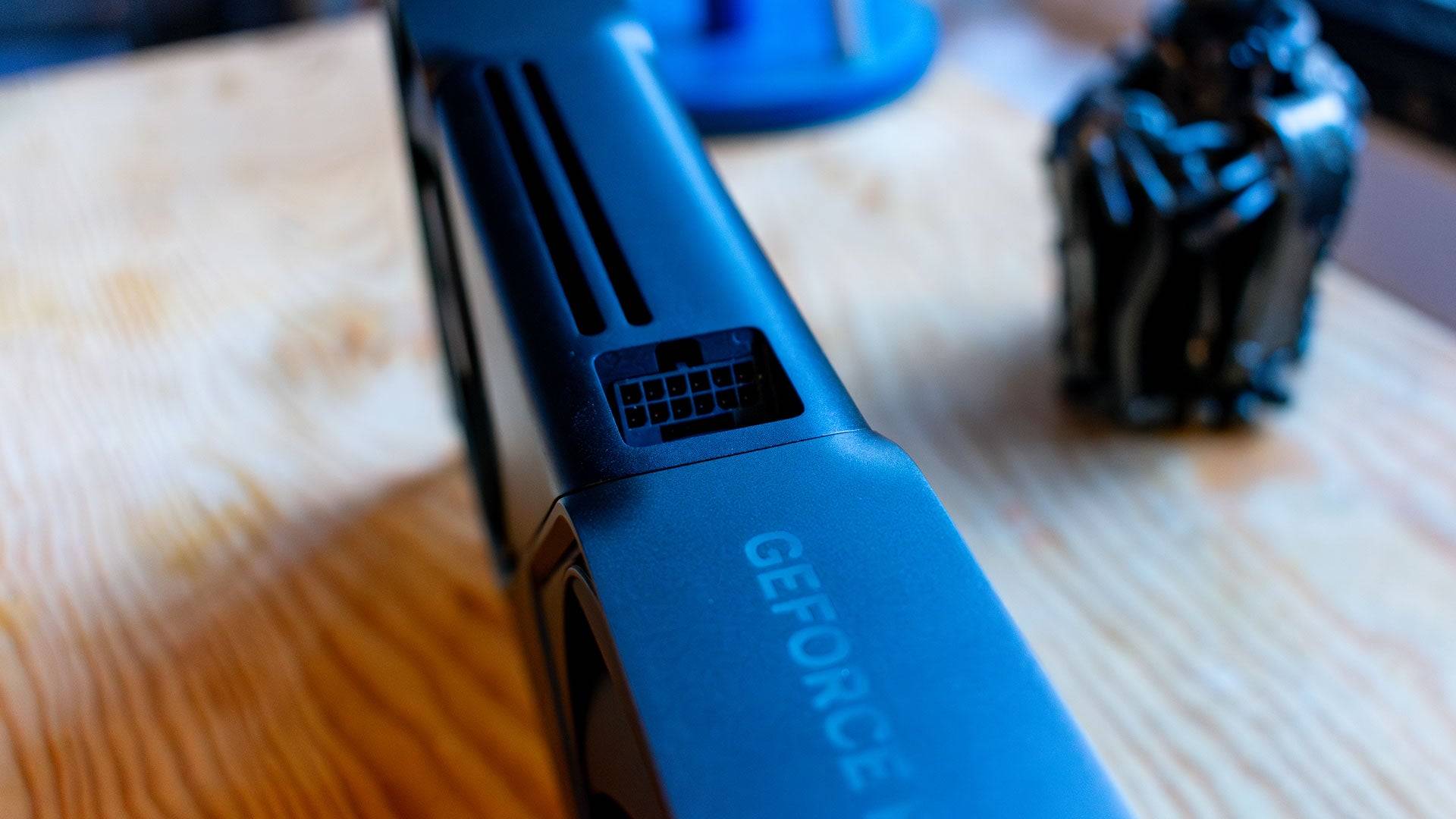

RTX 5090 – Specifications and Features
Built on Blackwell architecture, the RTX 5090 boasts a significant increase in CUDA cores (21,760 vs. 16,384 in the RTX 4090), resulting in a 32% boost in shader cores. This, combined with increased Tensor Cores (680 vs. 512) and RT Cores (170 vs. 128), provides substantial raw power. The 5th-generation Tensor Cores support FP4 operations, reducing VRAM dependency in AI workloads.
The card features 32GB of GDDR7 VRAM, a generational upgrade offering improved speed and efficiency compared to the RTX 4090's GDDR6X. However, its 575W power consumption is a notable increase.
DLSS 4's shift to a Transformer Neural Network (TNN) aims to enhance image quality and reduce artifacts. MFG builds upon DLSS 3's Frame Generation, generating multiple frames per rendered image for drastically improved frame rates, but requires a solid baseline frame rate to avoid latency issues.
Purchasing Guide
The RTX 5090 Founders Edition starts at $1,999, with third-party variants potentially costing significantly more. It's available from January 30th.
The Founders Edition: A Surprisingly Compact Design
Despite its 575W power draw, the Founders Edition is surprisingly compact, fitting within a dual-slot chassis. This is achieved through a redesigned PCB placement and cooling solution, maximizing airflow. Temperatures reach approximately 86°C under load, while power consumption peaks at 578W.
The card retains a similar design language to previous generations, featuring a silver 'X' design and a GeForce RTX logo with white LEDs. A new, angled 12V-2x6 power connector improves cable management and security. An included adapter converts four 8-pin PCIe power connectors to the required 12V-2x6 input.
DLSS 4: Addressing the "Fake Frames" Concern
While the RTX 5090 offers a noticeable performance increase in benchmarks, the real magic lies in DLSS 4's MFG. A new AI Management Processor (AMP) core efficiently manages GPU workload distribution, resulting in a 40% faster frame generation model requiring 30% less memory than its predecessor. The AMP's Flip Metering algorithm minimizes input lag. MFG works best when paired with DLSS upscaling and a high frame rate.
Initial testing in Cyberpunk 2077 and Star Wars Outlaws showed impressive results, with frame rates exceeding 280fps in some scenarios. While some minor artifacts were observed, they were largely insignificant. Nvidia claims DLSS 4 support will be available in 75 games by January 30th.
RTX 5090 – Performance Benchmarks
Benchmarking revealed a generational leap in raw performance, particularly in 3DMark. However, in many games, CPU bottlenecks limited the performance gains over the RTX 4090 to a modest 10-20%, especially at 4K. Lower resolutions showed even less improvement. Metro Exodus: Enhanced Edition, without upscaling, showcased a more substantial 25% improvement.
Nvidia GeForce RTX 5090 – Benchmark Charts
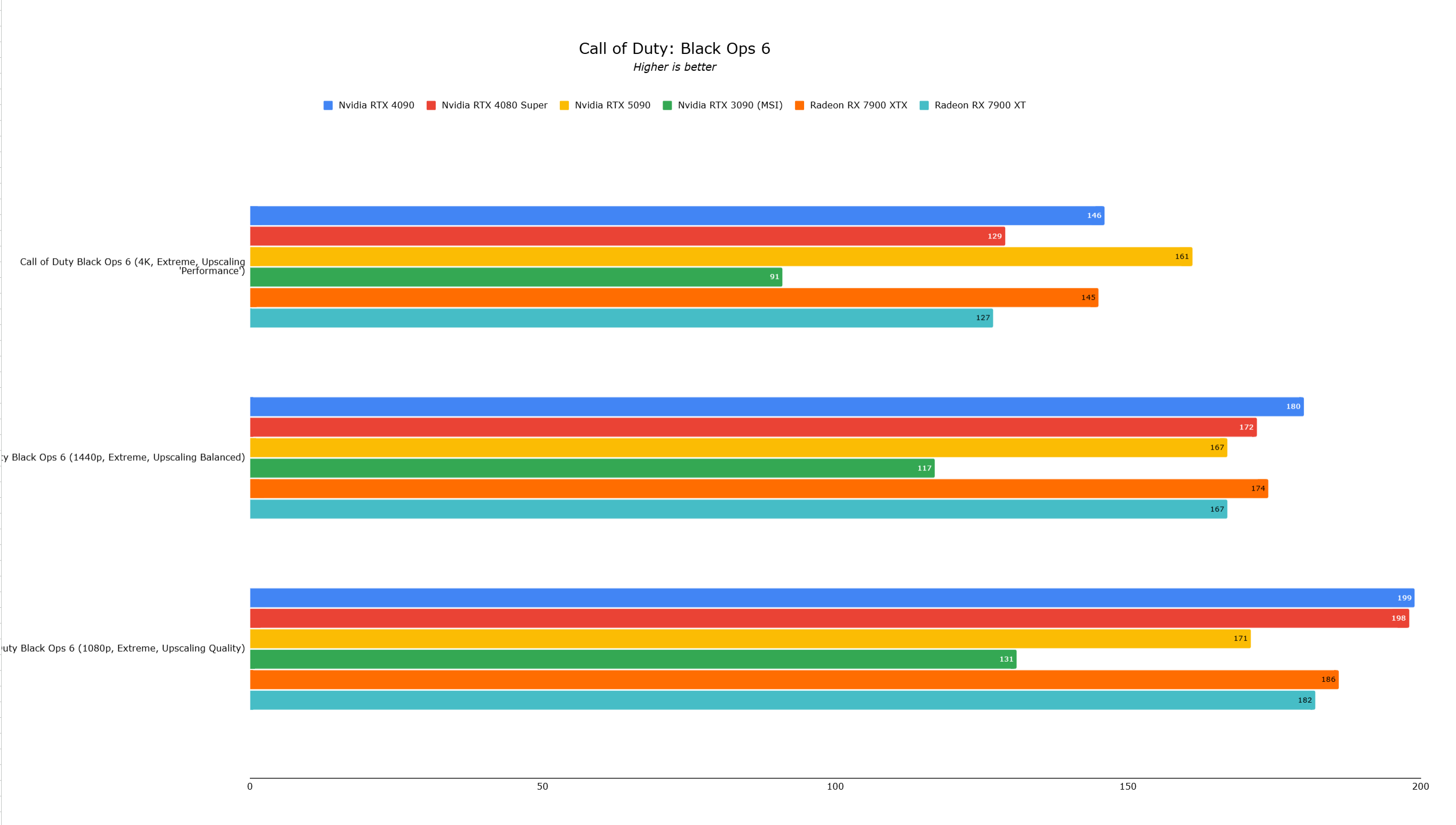
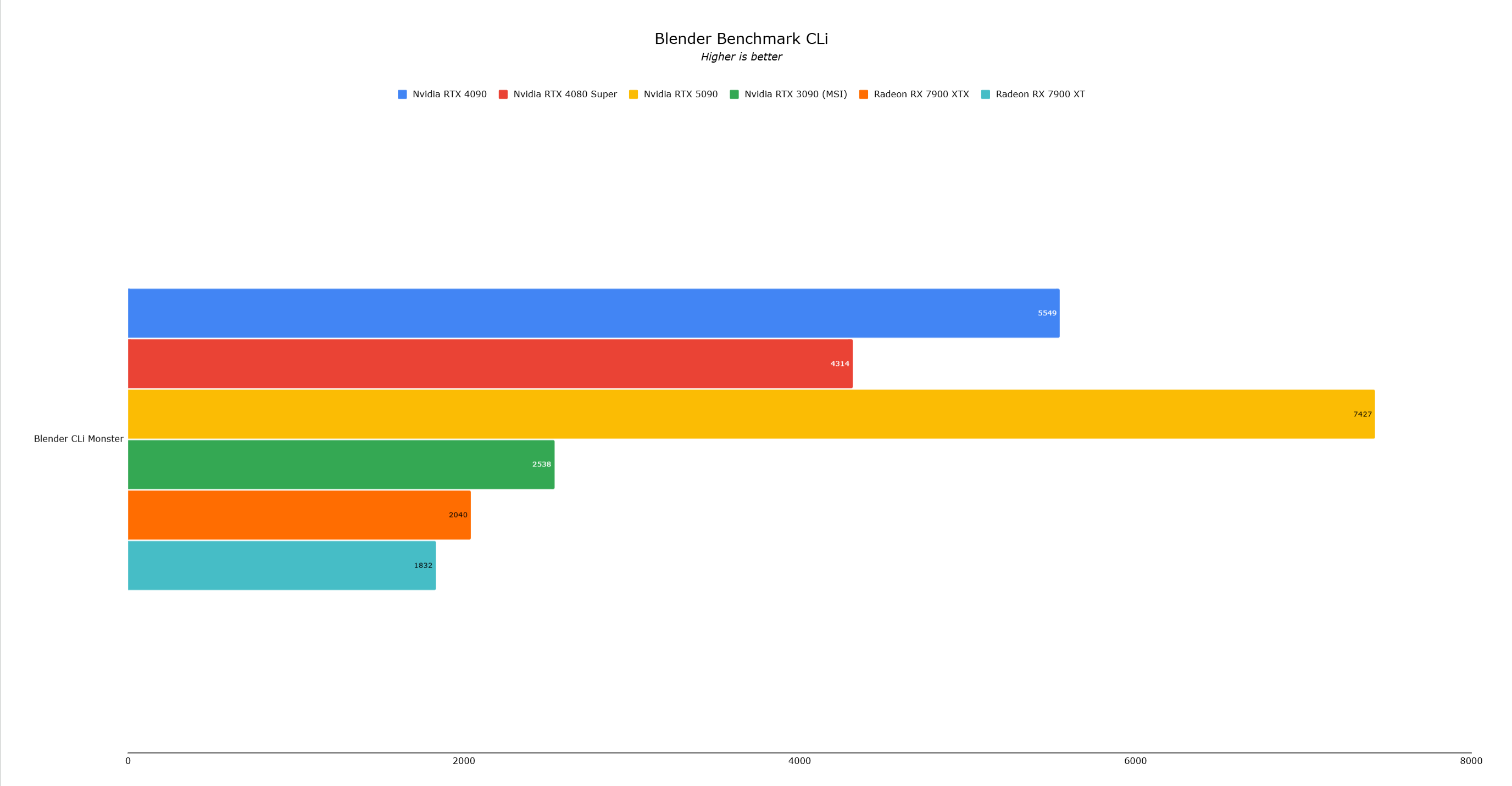 14 Images
14 Images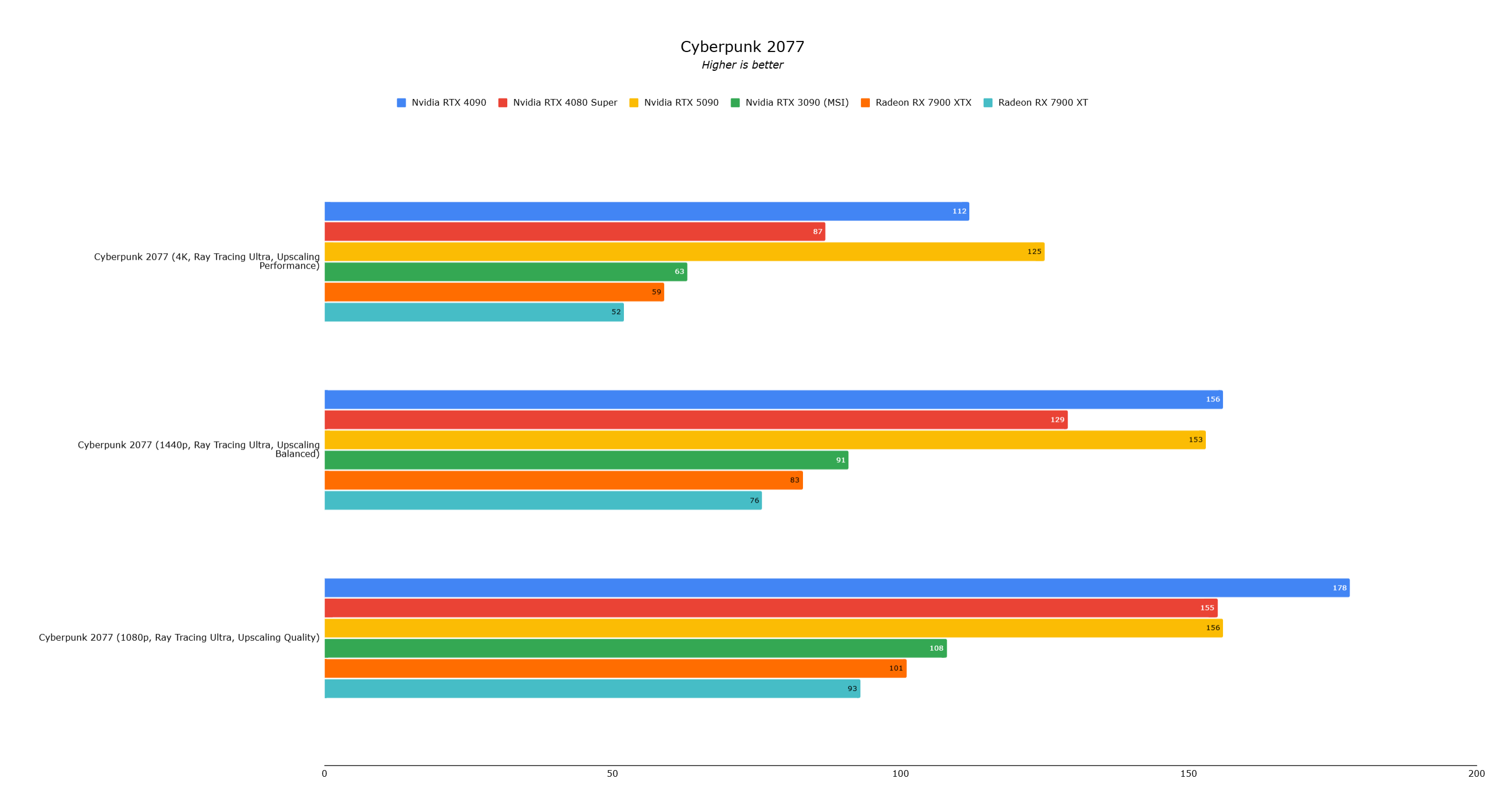
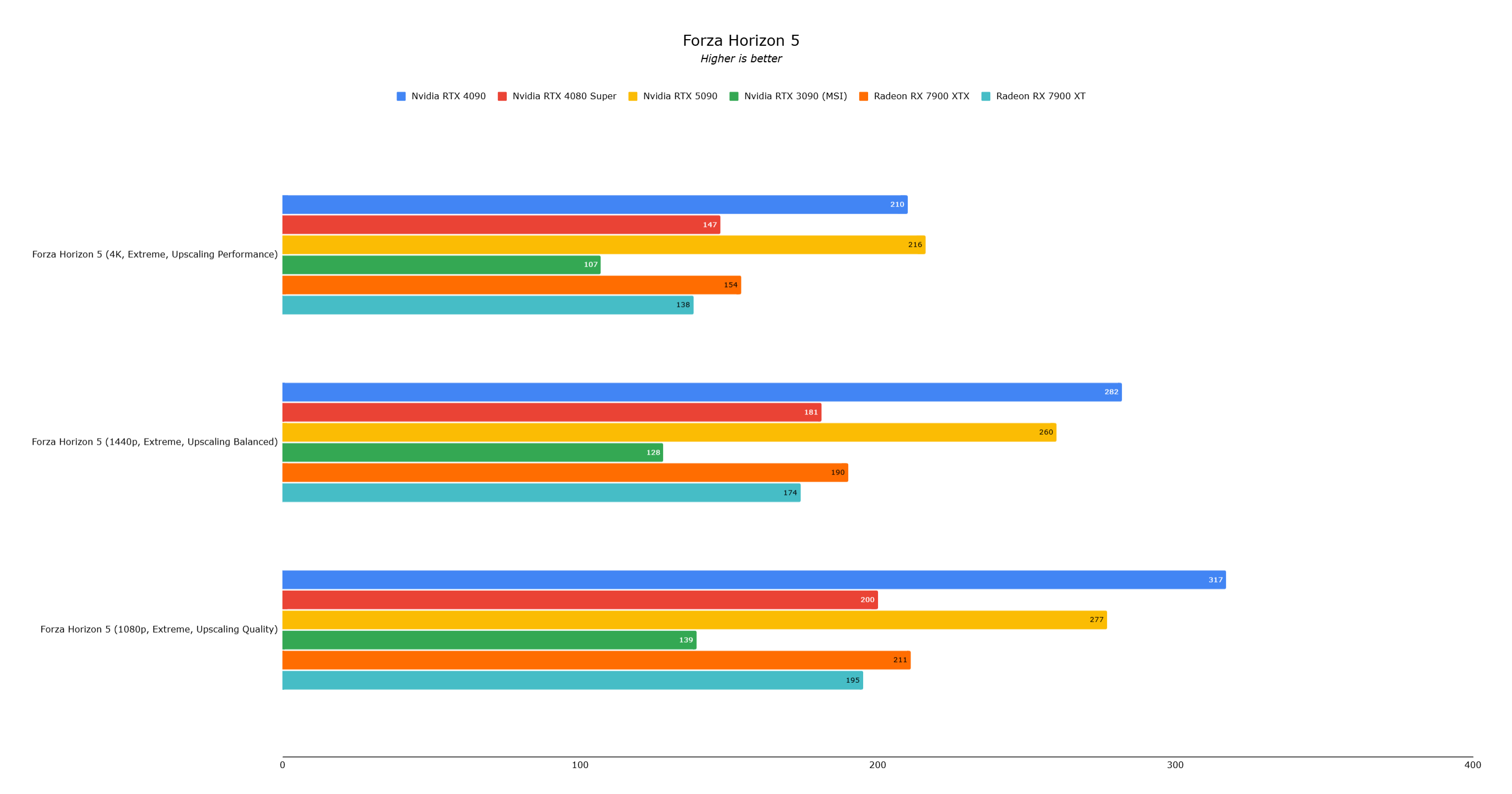
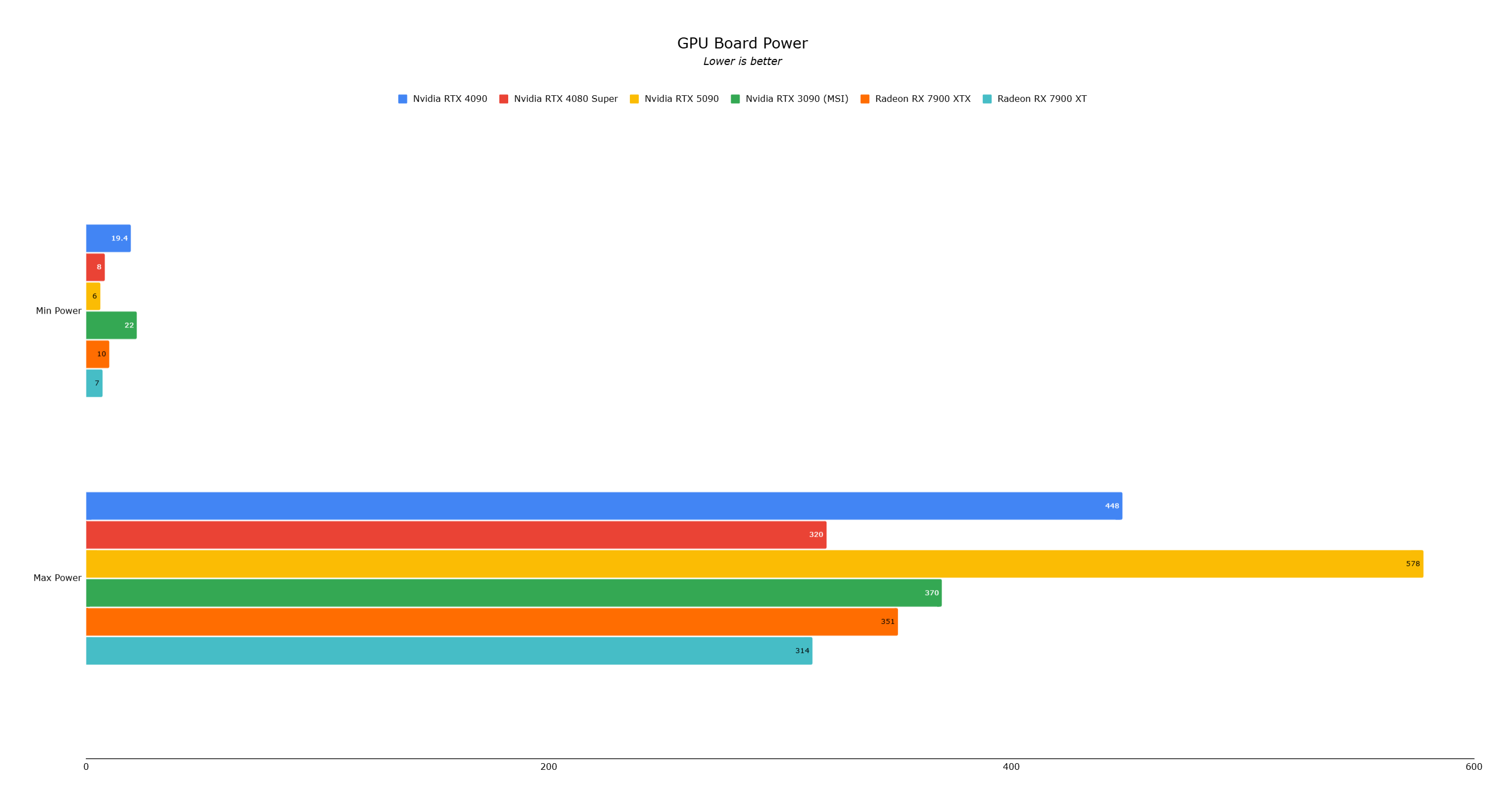

Games like Total War: Warhammer 3, lacking ray tracing and upscaling, demonstrated a more significant performance uplift (35%), showcasing the card's raw power. Assassins Creed Mirage, however, experienced unexpected performance issues, likely due to driver bugs. Black Myth: Wukong showed a 20% improvement. Forza Horizon 5 showed negligible gains due to CPU limitations.
Conclusion
The RTX 5090 is undeniably powerful, but its generational leap is primarily driven by DLSS 4 and MFG. While raw performance improvements exist, they are often limited by current game engine limitations and CPU bottlenecks. The card's true potential lies in future titles that can fully utilize its capabilities. For most users, the RTX 4090 remains a powerful and cost-effective option. The RTX 5090 is a compelling choice for those seeking cutting-edge AI-powered gaming and willing to invest in a future-proof setup.
AnswerSee Results-
1
![Roblox Forsaken Characters Tier List [UPDATED] (2025)](https://imgs.ksjha.com/uploads/18/17380116246797f3e8a8a39.jpg)
Roblox Forsaken Characters Tier List [UPDATED] (2025)
Mar 17,2025
-
2

Roblox UGC Limited Codes Unveiled for January 2025
Jan 06,2025
-
3

Stardew Valley: A Complete Guide To Enchantments & Weapon Forging
Jan 07,2025
-
4

Pokémon TCG Pocket: Troubleshooting Error 102 Resolved
Jan 08,2025
-
5

Free Fire Characters 2025: Ultimate Guide
Feb 20,2025
-
6
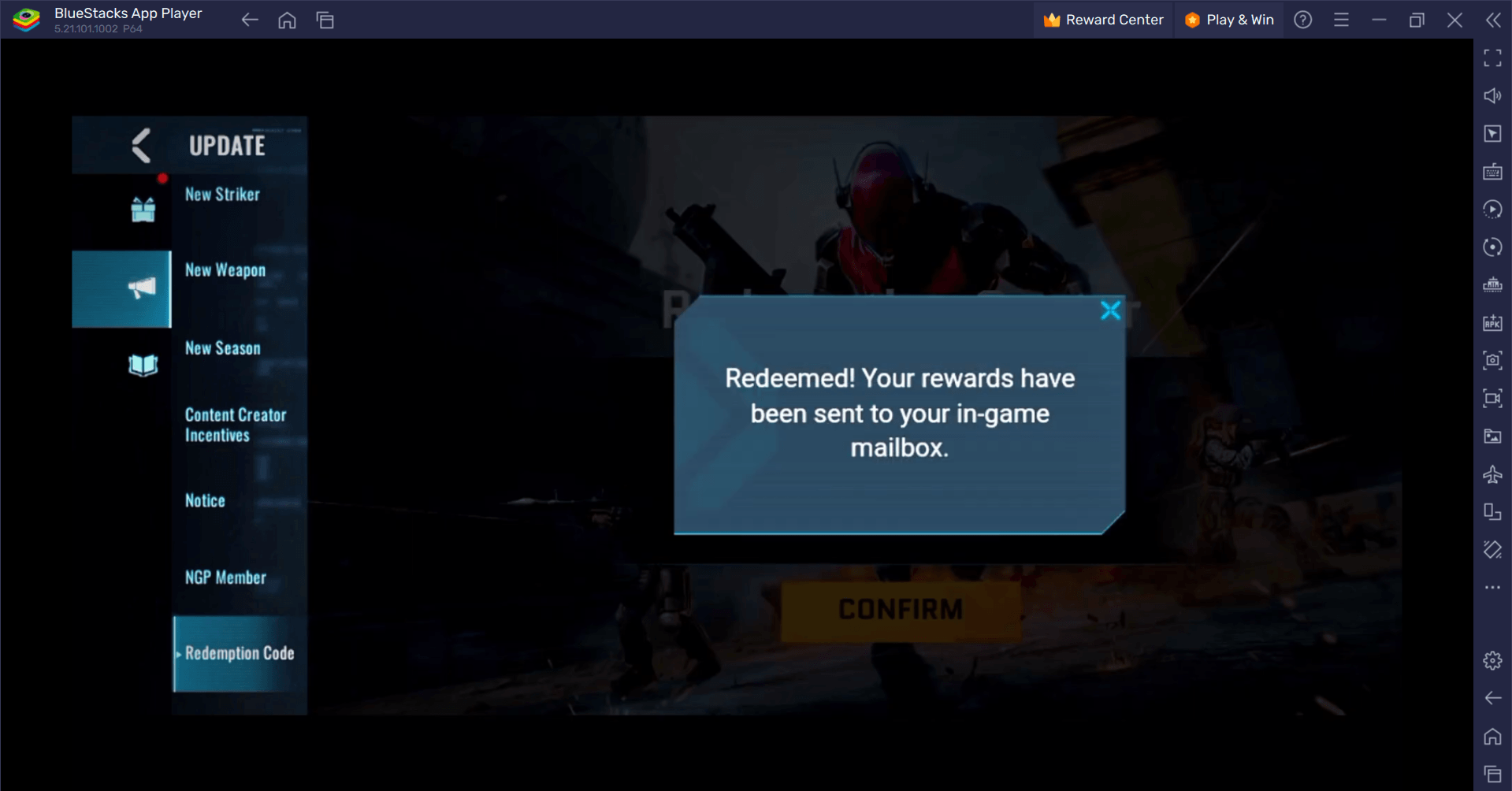
Blood Strike - All Working Redeem Codes January 2025
Jan 08,2025
-
7

Blue Archive Unveils Cyber New Year March Event
Dec 19,2024
-
8

Roblox: RIVALS Codes (January 2025)
Jan 07,2025
-
9

Cyber Quest: Engage in Captivating Card Battles on Android
Dec 19,2024
-
10

Delta Force: A Complete Guide to All Campaign Missions
Apr 09,2025
-
Download

A Simple Life with My Unobtrusive Sister
Casual / 392.30M
Update: Mar 27,2025
-
Download

Random fap scene
Casual / 20.10M
Update: Dec 26,2024
-
Download
![Corrupting the Universe [v3.0]](https://imgs.ksjha.com/uploads/66/1719514653667db61d741e9.jpg)
Corrupting the Universe [v3.0]
Casual / 486.00M
Update: Dec 17,2024
-
4
Ben 10 A day with Gwen
-
5
Oniga Town of the Dead
-
6
A Wife And Mother
-
7
Cute Reapers in my Room Android
-
8
Permit Deny
-
9
Utouto Suyasuya
-
10
Roblox














